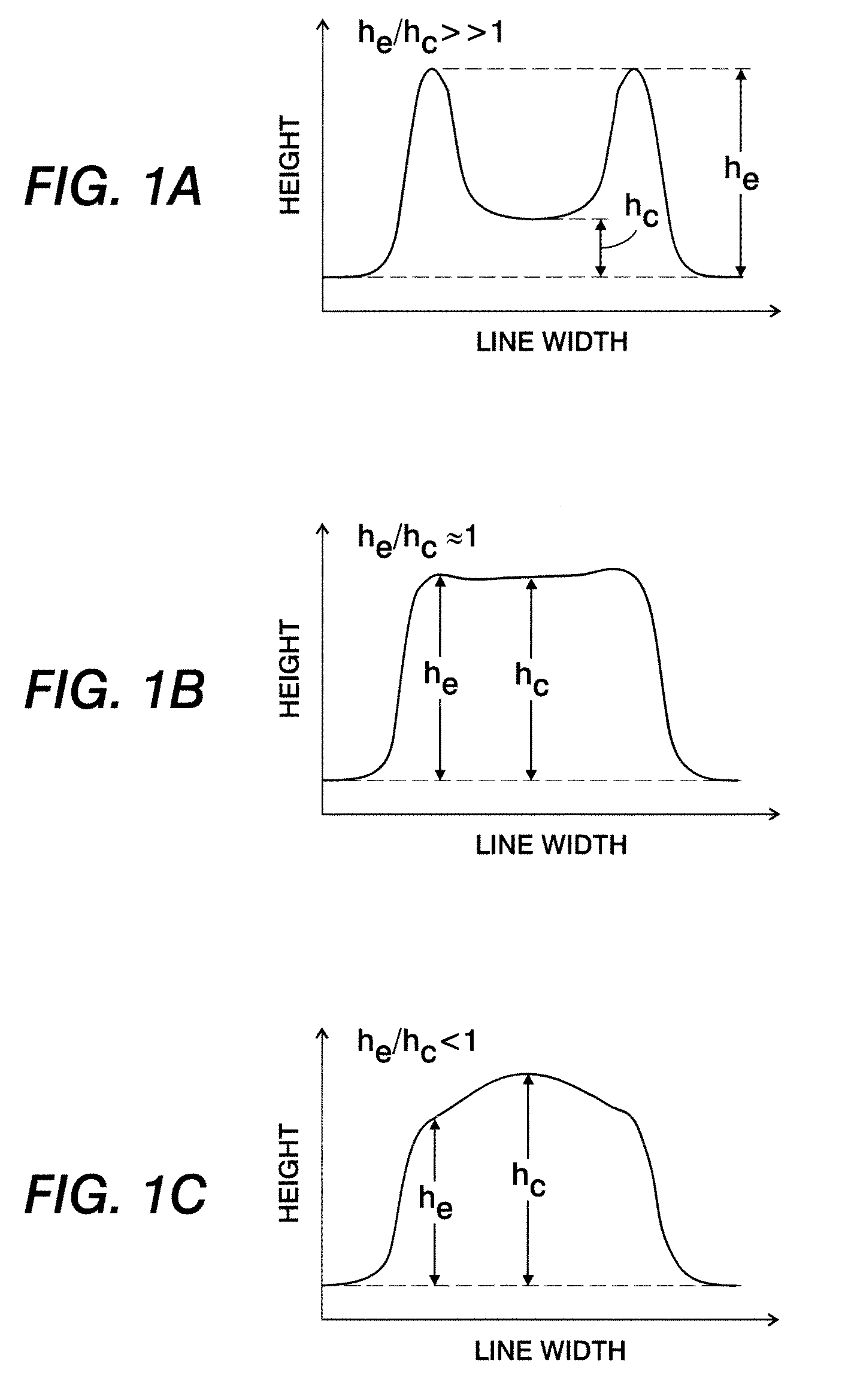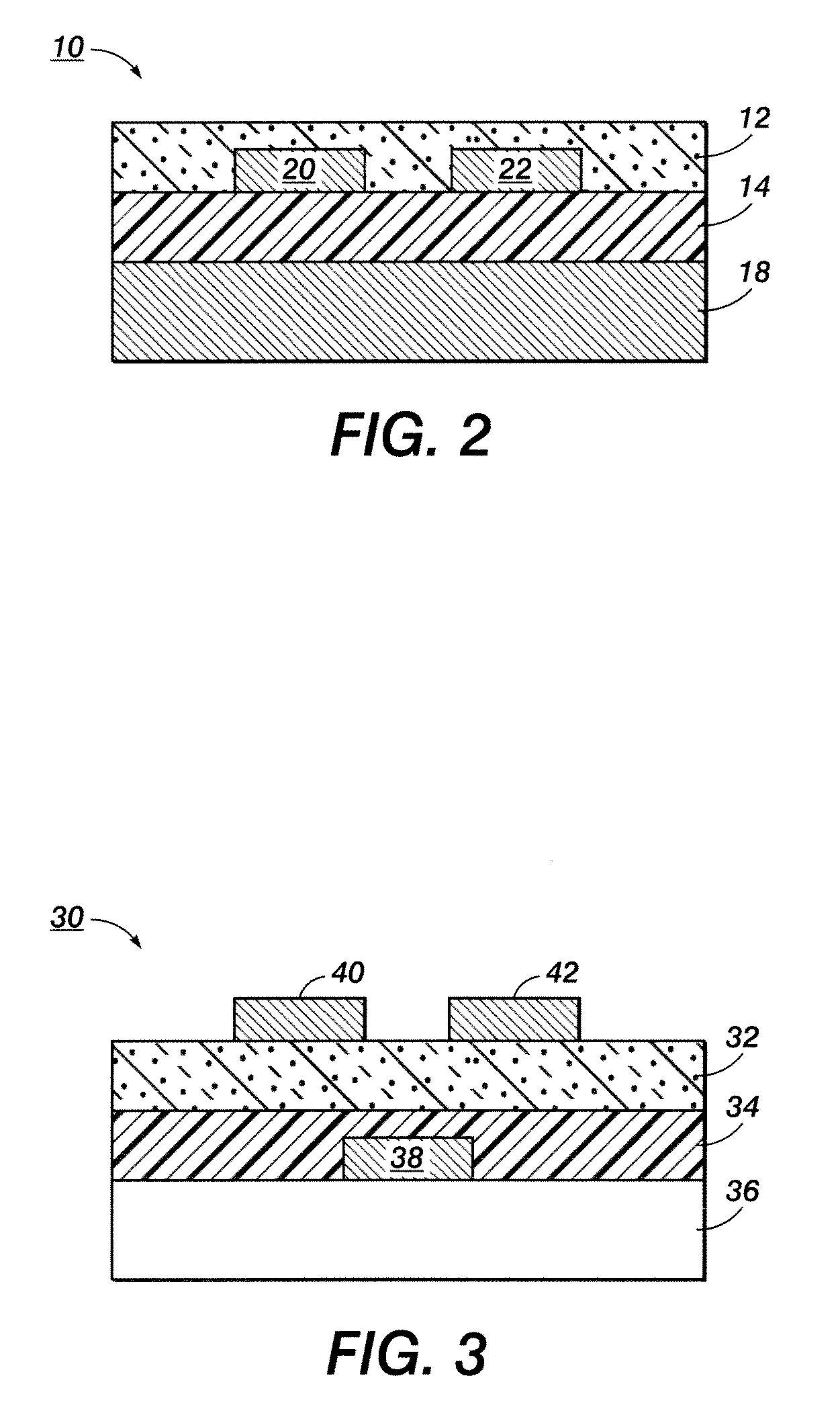Silver nanoparticle ink composition
a silver nanoparticle and ink composition technology, applied in the direction of metal/alloy conductors, non-metal conductors, conductive traces, etc., can solve the problems of not meeting the conductivity, processing, cost requirements of practical applications, and the jettability of previous ink compositions containing silver nanoparticles, and cannot be printed using conventional inkjet printing technologies
- Summary
- Abstract
- Description
- Claims
- Application Information
AI Technical Summary
Benefits of technology
Problems solved by technology
Method used
Image
Examples
example 1
[0067]Two ink compositions were formulated. Composition A contained 40 wt % oleic acid stabilized silver nanoparticles and 60 wt % xylene. Composition B contained 40 wt % oleic acid stabilized silver nanoparticles, 40 wt % dodecane, and 20 wt % terpineol.
[0068]Oleic acid stabilized silver nanoparticles were prepared as follows: Silver acetate was fully dissolved into a mixture of toluene and oleylamine at 50° C. Phenylhydrazine diluted in toluene was then added drop-wise followed by 30 minutes of mixing at the same temperature. The reaction solution was cooled down to room temperature. Next, a mixture of acetone and methanol (1:1 v / v) was added with stirring to precipitate the oleylamine-stabilized silver nanoparticles. The product was filtered and washed three times with acetone and methanol. The silver nanoparticles were then dissolved in toluene and oleic acid was added to the solution, followed by 30 minutes of mixing. Oleic acid-stabilized silver nanoparticles were precipitated...
example 2
[0071]Composition B was then printed on two different substrates to show the effect of the surface energy of the substrate on the line width of the ink composition. A plasma cleaned glass substrate was used as a hydrophilic surface. A glass substrate modified by either hexamethyldisilazane or octyltrichlorosilane was used as a hydrophobic surface.
[0072]FIG. 7 is a graph showing the line width versus the drop spacing for Composition B on each surface. Similar line widths were achieved on both hydrophilic and hydrophobic surfaces over a wide range of drop spacings. This indicated that Composition B was surface energy independent. This is a very important feature, because it means Composition B and similar ink compositions can be used to print electronic components on different surfaces having variable surface energies.
example 3
[0073]Nine ink compositions were made. They varied in the amount of silver nanoparticles and the weight ratio of dodecane to terpineol. Lines were printed with the ink compositions and annealed at 210° C. for 30 minutes, and the yield of conductive lines (i.e. whether the line was conductive or not) was measured. The results are shown in Table 1.
TABLE 1dodecane / terpineolSilver nanoparticle contentweight ratio25 wt %30 wt %40 wt %5:1NoneNoneNone2:1None50-60%100%1:1None50-60%100%
[0074]As seen here, when the relative amount of terpineol was low (ratio of 5:1), none of the printed lines were conductive. Similarly, when the loading of silver nanoparticles was low (25 wt %), no printed lines were conductive. At higher loadings of silver nanoparticles and higher amounts of terpineol, all printed lines were conductive.
PUM
| Property | Measurement | Unit |
|---|---|---|
| particle size | aaaaa | aaaaa |
| weight percent | aaaaa | aaaaa |
| viscosity | aaaaa | aaaaa |
Abstract
Description
Claims
Application Information
 Login to View More
Login to View More - R&D
- Intellectual Property
- Life Sciences
- Materials
- Tech Scout
- Unparalleled Data Quality
- Higher Quality Content
- 60% Fewer Hallucinations
Browse by: Latest US Patents, China's latest patents, Technical Efficacy Thesaurus, Application Domain, Technology Topic, Popular Technical Reports.
© 2025 PatSnap. All rights reserved.Legal|Privacy policy|Modern Slavery Act Transparency Statement|Sitemap|About US| Contact US: help@patsnap.com



